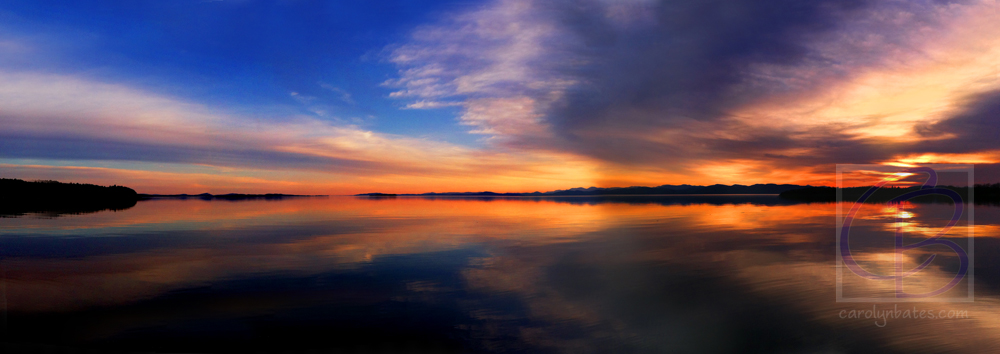What is more beautiful than a sunset?
The colors are can be so vibrant and picturesque. But what makes these colors occur?

Sunrise Sunset
One of the great joys of living near Lake Champlain is the breath-taking sunrises or sunsets one can see over the water. Colors can range from a crisp red to a blend of pastel hues, from pink to baby blue, shifting even over the course of the event. Why is it that dawn and dusk lend such a visual explosion to the sky while mid-day colors range merely from blue through gray?
Pure light is white. For us to perceive color the white light must be separated into its constituent wavelengths, referred to as scattering. Blues and violets have shorter wavelengths while reds and oranges are longer. Two different types of scattering play a role in determining sky color: Rayleigh scattering and Mie scattering.
When light waves run into particles smaller than their wavelength it is referred to as Rayleigh scattering. The phenomenon was named for British physicist John Strutt otherwise known as Lord Rayleigh. Particles that cause Rayleigh scattering include air molecules. In the absence of an atmosphere the sky would appear black, as it does in pictures from the moon. Rayleigh scattering disproportionately affects low wavelength light – blues and violets which is why our sky is blue (water molecules also cause Rayleigh scattering which is why pure water appears blueish). If our eyes were more like those of bees and could better detect violet, we would see even more of that color in the sky.
When light runs into particles slightly larger than its wavelength it is referred to as Mie scattering, named for the German physicist Gustav Mie. Particles that cause Mie scattering include water droplets, smoke, smog, and particulates. Mie scattering affects all wavelengths of light so the reflected image is white. Mie scattering is responsible for the white of clouds in an otherwise blue sky and the hazy look of high humidity days.